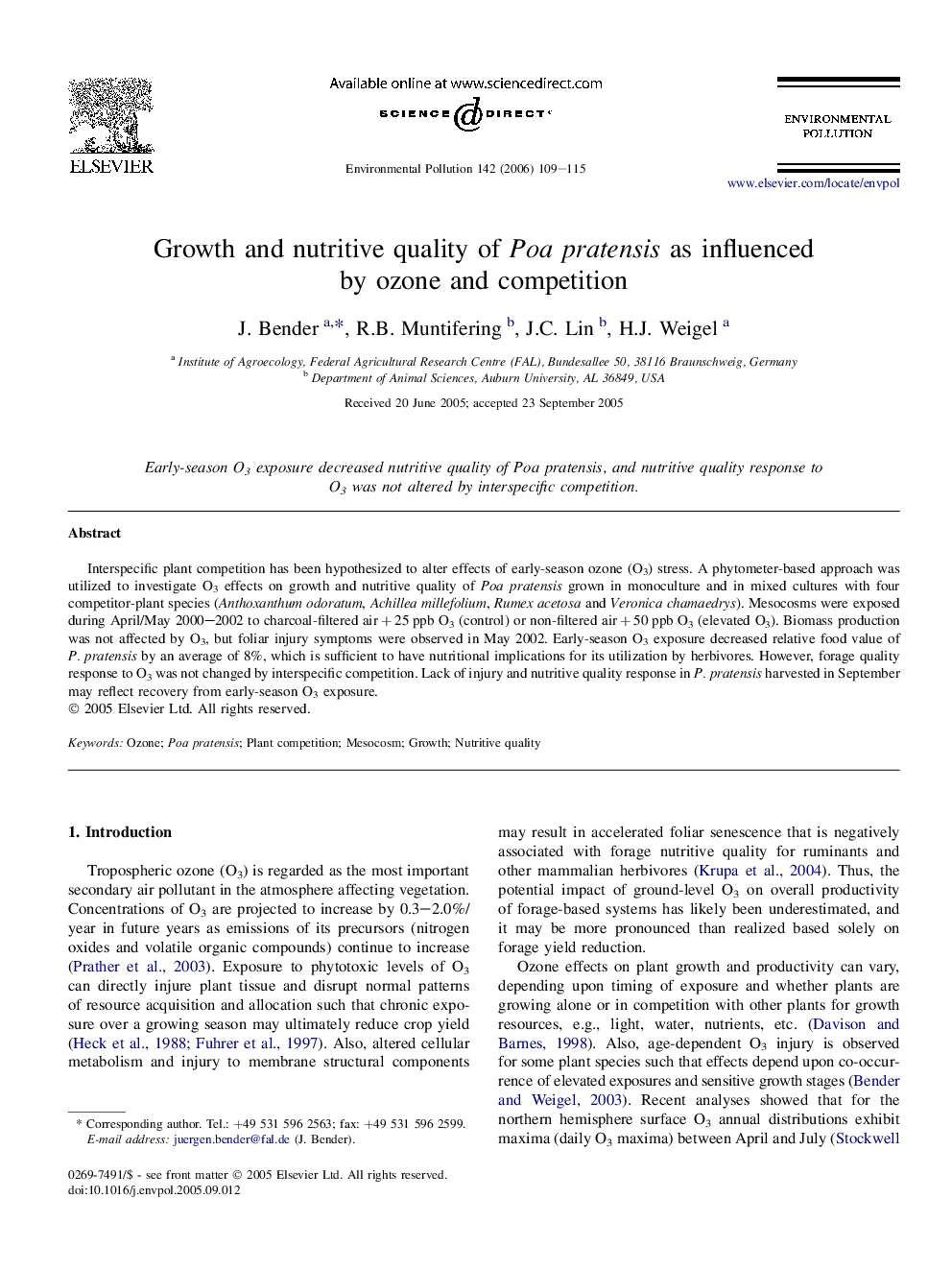| Article ID | Journal | Published Year | Pages | File Type |
|---|---|---|---|---|
| 4428012 | Environmental Pollution | 2006 | 7 Pages |
Interspecific plant competition has been hypothesized to alter effects of early-season ozone (O3) stress. A phytometer-based approach was utilized to investigate O3 effects on growth and nutritive quality of Poa pratensis grown in monoculture and in mixed cultures with four competitor-plant species (Anthoxanthum odoratum, Achillea millefolium, Rumex acetosa and Veronica chamaedrys). Mesocosms were exposed during April/May 2000–2002 to charcoal-filtered air + 25 ppb O3 (control) or non-filtered air + 50 ppb O3 (elevated O3). Biomass production was not affected by O3, but foliar injury symptoms were observed in May 2002. Early-season O3 exposure decreased relative food value of P. pratensis by an average of 8%, which is sufficient to have nutritional implications for its utilization by herbivores. However, forage quality response to O3 was not changed by interspecific competition. Lack of injury and nutritive quality response in P. pratensis harvested in September may reflect recovery from early-season O3 exposure.
